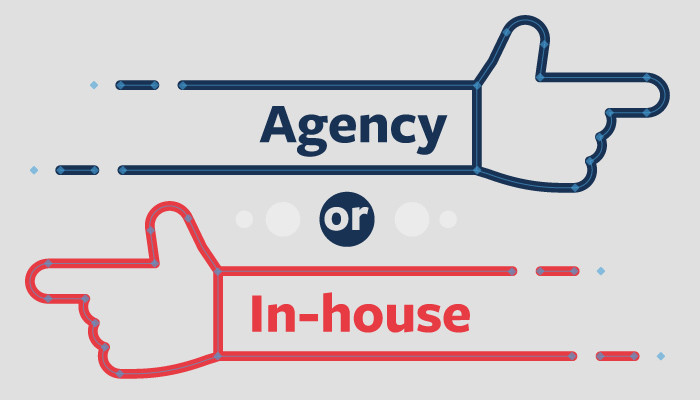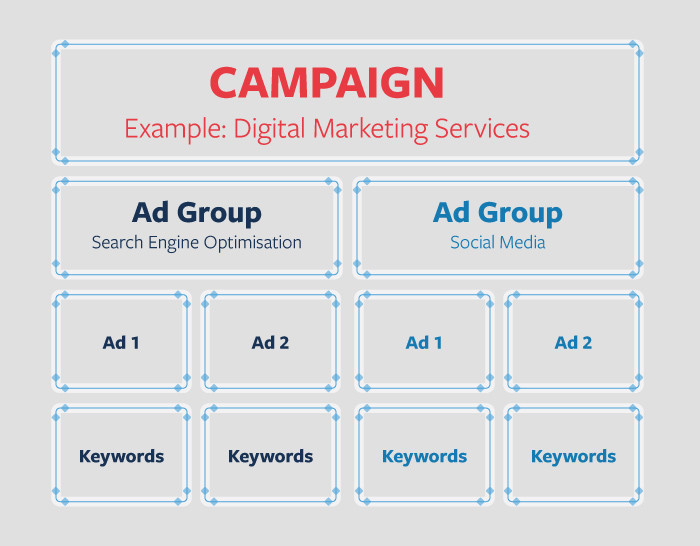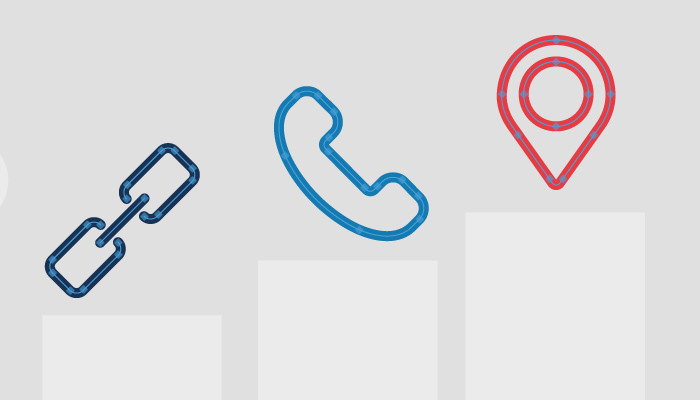How to get the most from your Google Ad Grants account
For nonprofits, Google Grants are a tremendous asset in their digital arsenal. But the minimum requirements to retain a Google Grant have presented challenges for some grantees.
So, how can nonprofits both new and old to Google Grants make sure they get the most from their monthly spend? In this guide, we cover everything you need to know about Google Grants and managing an account.
What are Google Ad Grants?

Google Ad Grants is a donation initiative by the charitable arm of Google: Google for Nonprofits. It is a program that provides free advertising credit to eligible nonprofits, which allows charities to run text-based ads on Google Search. The goal is to help nonprofits increase visibility, attract donors and reach people who need their services.
The grant is a monthly spend of $10,000 (£7,000) in-kind advertising on Google’s ad platform, AdWords.
Who is eligible for Google Ad Grants?
Not all nonprofits qualify for Google Ad Grants. To be eligible, an organisation must:
- Hold valid charity status in their country.
- Register with Google for Nonprofits.
- Have a functional website that meets Google’s quality guidelines.
- Agree to comply with Google Ad Grants’ policies and performance requirements.
Certain organisations are not eligible, including government bodies, hospitals and schools.
How to apply for a Google Ad Grant
Applying for Google Ad Grants involves several steps:
- Register with Google for Nonprofits. Sign up through the Google for Nonprofits portal and verify your charity’s status.
- Submit your website for review. Your website must meet Google’s requirements, including clear navigation, relevant content and an easy-to-understand description of your mission and activities.
- Create a Google Ads account. Set up a new Google Ads account (separate from any paid Google Ads accounts).
- Configure your account. Follow Google’s setup guidelines, including creating campaigns, ad groups and keyword lists.
- Submit your application. Apply for Google Ad Grants and wait for approval.
- Approval can take a few weeks. Once approved, you can begin creating and running ads immediately.
What can your charity use Google Ad Grants for?
Google Ad Grants can help charities achieve various goals, such as
- Increasing awareness - Drive traffic to your website and educate people about your cause.
- Attracting donations - Promote donation pages to increase financial support.
- Recruiting volunteers - Advertise opportunities for people to get involved.
- Promoting events - Spread the word about fundraisers, workshops or other activities.
- Sharing resources - Help people find important information, support services or educational materials.
- Gather contact information - Encourage signups for your newsletter or other services.
What are the benefits of Google Ad Grants?
Google Ad Grants provides several advantages for charities:
- Free advertising - Up to $10,000 (£7,000) per month in ad credit helps you reach a wider audience without extra cost.
- Increased visibility - Ads appear at the top of Google Search results, making it easier for people to find your organisation.
- Targeted reach - Ads can target specific audiences based on keywords, location and search intent.
- Data insights - Google Ads provides analytics that help charities understand user behaviour and refine their campaigns.
- Scalability - Charities can adjust their campaigns over time to improve performance and engagement.
Requirements for managing your Google Ad Grants account
Unlike a standard “paid for” AdWords account, a Google Grant account has some limitations:
- You will always rank below “paid for” ads bidding on the same keywords.
- You can only run search ads and use keyword targeting.
- Your ad spend is broken down into a daily cap of $329.00 per day.
- You have a maximum cost per click (CPC) of $2 if you do not use the “Maximise Conversions” bid strategy.
- You cannot bid on branded terms out with your own charity.
- You must maintain a click-through rate (CTR) of 5%.
- You must use geo-targeting on all campaigns.
- Keywords must maintain a quality score of 3 or higher.
- Bidding on single-word keywords is prohibited.
- Campaigns must have at least two ad groups.
- An ad group must contain at least two ads.
- Ads must use at least two site link extensions.
While this list might look very restrictive, Google Ad Grants can be a really valuable resource for nonprofits, especially if you utilise the right strategy.
How to make the most of your Google Grant
Google has accepted you into the Google Grants program! Congratulations! But where to begin?
There are plenty of avenues to explore for making the most of your Google Grant account. From doing it yourself to working with an external partner, we’ve drawn together our best advice on getting the most from your account!
Agency or in-house?

If you’re really not comfortable or feel out of your depth managing your account, the good news is the Google Grant does not prohibit you from handing over account management to a third party.
Depending on the size of your charity, it’s possible you don’t have a dedicated digital professional operating your channels. Your volunteers and staff are likely to be time-poor, and to suddenly inherit a Google Grant can be overwhelming. Getting to grips with building a proper account structure is hard enough, never mind implementing conversion tracking! Even with all the Google help and resources available, there sometimes just aren’t enough hours in the day to sit down, learn it all and then put it into action!
Sound familiar? You’re not alone. It’s often the main reason charities choose to outsource the management of their Google Grant account to an external agency.
Choosing to appoint an agency to manage your Google Grant might seem like an expensive outlay, however, if you pick your partner wisely, what you’ll gain back in your return on investment with donations, brand awareness and other onsite conversions will make it a worthy investment. The obvious benefit of having an agency take charge of your Google Grant is their expertise in getting the most out of your account and their experience of working within the limitations of the grant.
Agencies understand the unique financial constraints that charities face, so don’t be intimidated by enquiring about Google Grant management - it can be surprisingly affordable!
Do your research
You might know your charity inside out, but do you know how users are really searching? Don’t presume that you know best. Consult Google AdWords’ best known tool: Keyword Planner. By entering a category, phrase or website into the tool, it will generate keyword ideas and search volume.

It’s worth considering your chosen keywords and their search volume - too low and it may serve little to no benefit to your site. Keyword Planner will usually also give an indication of the expected cost-per-click. Pay attention and remember that if a keyword cost is drastically above $2.00, that you may have to use the “maximise conversions” bid strategy to see any success.
Take all search volume estimates with a pinch of salt, though; no tool is perfect, and an estimate is really an educated guess based on historical performance.
To get started with your keyword research, start by looking at the main areas and topics available on your website. Use these areas to help guide your searches.
Structure according to your site
Much like building up a bank of keywords, when creating campaigns and ad groups within your Google Grant, you’ll need to consider the structure of your site. Getting the structure right is fairly simple:
- You’ll need to begin with creating campaigns.
- Campaigns should focus on broad themes relevant to your site/products/services.
- Within a campaign, you should have a minimum of two ad groups.
- Within each ad group, you should have a minimum of two ads.
- Each ad group should relate to the theme of the campaign, but be more specific.
- The keywords within each ad group should be specific to that ad group.

A well-structured account is important for many reasons. The first being an easy-to-navigate account makes the day to day running of your PPC campaigns much easier to handle. Being able to jump in and out of campaigns and knowing where any one ad is at any time will reduce the possibility of making a mistake - such as letting a seasonal campaign run on too long.
Splitting up your account into campaigns and ad groups is also important from the point of view of keywords. Really, no ad group should have more than 5-10 keywords within it. Having a limit on the number of keywords per account is important, not just for relevancy, but for conducting and breaking down essential optimisation tasks like search term reports.
Extend your ad capabilities
How else can we elevate your account against your competitors? One area that your Google Grant does not face restrictions in is ad extensions - a tool that can help to elevate your ads and improve click-through rate. If there’s an ad extension that is a good fit for your company, there’s no good reason not to use it.
Although there are 11 types of ad extensions that you can take advantage of, at the very least, we recommend these three that take only minutes to set up.

- Sitelink extensions - These are additional links to pages within your site that appear underneath your ad. They give your user more option and increase your click-through rate, provided the links are relevant. A minimum of two sitelink extensions must be used across your ads - this is the only ad extension requirement for your Google Grant account.
- Call extensions - Does your charity offer a helpline service? Do you want your users to make a phone call enquiry? A call extension gives users the option to phone directly from an ad. In some countries, you can use a Google Forwarding Number to help measure your results.
- Location extensions - Does any aspect of your charity rely on footfall, such as charity shops and donation centres? Provided you have a verified Google My Business listing, you can use location extensions to help users find your charity - by showing your ads with an address, a map or the distance to the location.
Ad extensions help to expand your “real estate” when serving on the Search Engine Results Pages. With so many ads and organic search results to choose from, even if you are serving in position one, making your ad stand out with ad extensions will help to place you at an advantage.
Think about your ad creatives
How you word and present your ads are going to have a significant impact on your click-through rate and the overall success of your account.
Depending on your charity’s mission, you could draw on tactical messaging that emotively compels the user to take action. Selling the benefits of services or products you offer, such as “free will writing” will help to drive traffic. When writing an ad, remember this: even as a charity, to see the best success from your ads, you need to address a pain point.
Remember when crafting an ad to include:
- The keyword you are targeting
- A call to action to motivate the user
- Any special promotions or unique selling points
- Ensure your landing page is relevant
- Ensure your landing page contains your targeted keywords
As part of your Google Grant guidelines, you should be operating a minimum of two ads per ad group. However, best practice dictates that you should really be running 3-4 ads, each with different messaging. This allows you to identify what resonates best with your audience. Remember, some ads may have a lower click-through rate, but a higher conversion rate. Let ads run for a decent number of impressions (say 1,000 or more) or a week before deciding to pause.
How will you make the most of your Google Grant?
If you’re a charity that doesn’t have a Google Grant yet, head on over to Google for Nonprofits to check if you’re eligible and apply online.
Feeling like you’ve bitten off more than you can chew? Don’t worry, we’re experts in managing Google Grants. We are a Google Partner, meaning we’ve managed at least $10,000 in ad spend in the last 90 days and have maintained an optimisation score of at least 70%.
Just get in touch and we’ll help get you sorted!